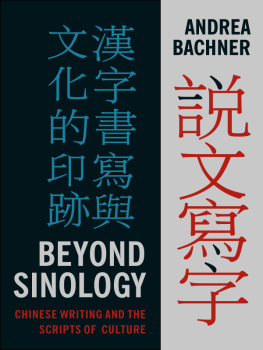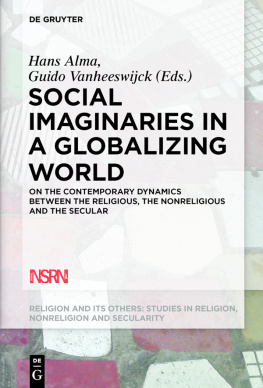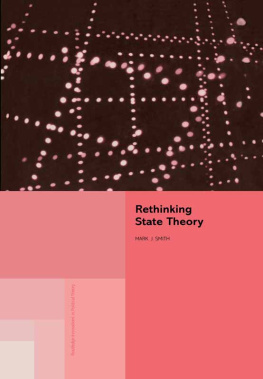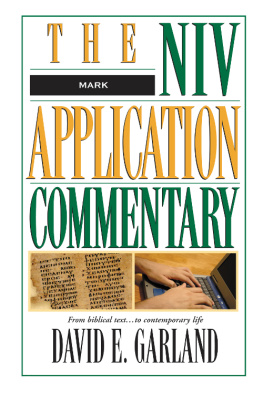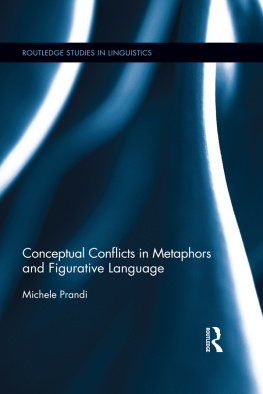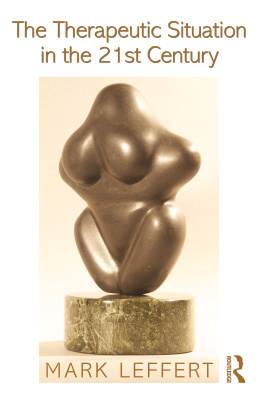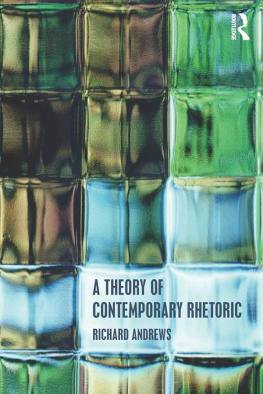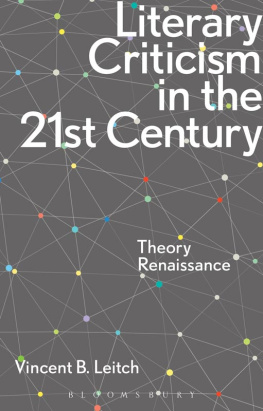THE MARK OF THEORY
The Mark of Theory
INSCRIPTIVE FIGURES, POSTSTRUCTURALIST PREHISTORIES
ANDREA BACHNER
FORDHAM UNIVERSITY PRESS
New York 2018
Copyright 2018 Fordham University Press
All rights reserved. No part of this publication may be reproduced, stored in a retrieval system, or transmitted in any form or by any meanselectronic, mechanical, photocopy, recording, or any otherexcept for brief quotations in printed reviews, without the prior permission of the publisher.
This books publication was supported by a subvention from Cornell University.
Fordham University Press has no responsibility for the persistence or accuracy of URLs for external or third-party Internet websites referred to in this publication and does not guarantee that any content on such websites is, or will remain, accurate or appropriate.
Fordham University Press also publishes its books in a variety of electronic formats. Some content that appears in print may not be available in electronic books.
Visit us online at www.fordhampress.com.
Library of Congress Cataloging-in-Publication Data available online at https://catalog.loc.gov.
CONTENTS
Introduction
At the Scene of Inscription
Inscription
1. The action of inscribing; the action of writing upon or in something.
2. concr. That which is inscribed; a piece of writing or lettering upon something; a set of characters or words written, engraved, or otherwise traced upon a surface; esp. a legend, description, or record traced upon some hard substance for the sake of durability, as on a monument, building, stone, tablet, medal, coin, vase, etc.
3. spec. a. A short piece of writing placed at the beginning of a book or other composition, descriptive of its nature, contents, authorship, etc.; a title, heading, superscription. b. A brief dedication of a book or work of art to a person; the superscription of a letter. c. In early Music, a motto or sign, or a combination of both, placed at the beginning of an enigmatical canon, to indicate (often itself enigmatically) the manner of its resolution.
4. Anat. A marking upon some organ or part produced by another in contact with it; esp. a marking on the fleshy part of a muscle where a tendon crosses it.
5. Geom. The action of inscribing one figure in another.
6. Civil and Sc. Law. An accusation or challenge at law made under the condition that if it were false, the accuser would undergo the same punishment that would have been inflicted on the accused if found guilty.
Inscriptive Turns
Literature, art, and theory are shot through with scenarios of inscription: from Franz Kafkas inscriptive execution machine in In der Strafkolonie (In the Penal Colony) to contemporary performance art that rewrites the number tattoos of Auschwitz victims; from Sigmund Freuds metaphor of the mystic writing pad as a model for the psyche to nostalgias of photographic indexicality in the digital age; from early twentieth-century fascinations with gramophone grooves as alternative mode of writing to gender and racial differences imagined as corporeal marks in recent theoretical discourses. What accounts for this fascination? What aesthetic and theoretical aims does inscription serve? What role does it play in a global imaginary constructed and negotiated by new media technologies as well as in the present and future of theoretical thought?
I argue that inscription constitutes one of the master metaphors of contemporary theoretical thought, one that forms part of a theoretical unconscious, part of the partly visible, partly hidden conceptual matrix that underlies the laws and assumptions of theoretical thought. In this book, I understand inscription as a scene that takes place where and when a material surface is breached and forced to bear marks. As a figure that draws on a wide array of practices of marking, from tattooing to circumcision, from photographic imprints to phonographic grooves, inscription has provided an imaginary that oriented, governed, and irritated theoretical thought at least from the late nineteenth century up to today.
Even though theoretical concepts such as Paul de Mans notion of inscription or Jacques Derridas trace provide some of the most notorious avatars of inscription, figures of marking are not only at the core of deconstructivist theories or merely the object of media studies in the form of reflections on concrete technographic media.impact metaphors, feminist reflections on the mark of gender, or the contestation of epidermal schemas and stereotypes in theories of race. Rather than a symptom of the linguistic turn, inscription as a theoretical figure is the legacy of earlier inventions, such as the disciplines of anthropology and psychoanalysis or the technologies of photography and phonography, even as it inspires and fuels much of contemporary theory.
Inscription, understood as a conceptual deep structure, a medial imaginary, has an inception point that coincides with the beginning of modernity: with the emergence of new scientific paradigms such as psychoanalysis, anthropology, and sexology, with the invention of new technologies of vision and sound, and with the development of a modern sense of aesthetics. Inscription as a theoretical figure might well have an end date, although, despite incessant invocations of newness and rupture, such as the mantra of the digital revolution, it is yet to come. Inscription forms part of a profound epistemic structure. Although we can see it at work in the writings of many major theorists over the past 150 years, there is no school of inscription, no coherent group of thinkers that espouses inscriptionism as a doctrine. And yet, scenes in which a body becomes the surface of marks or traces are ubiquitous in much of twentieth-century cultural theory and philosophy, from psychoanalysis to (post)structuralism, from postcolonial theory to gender studies, from trauma theory to media studies. Theorists of inscriptionthough not forming a coherent group, let alone sharing a programuse scenes of inscription as theoretical figures, often for concepts that lie at the very heart of their projects.
Even though much of contemporary theory, philosophy, and aesthetics follow an inscriptive logic, I am not claiming the existence of an inscriptive turn. Thinking in terms of inscription is not just one of many turns according to which we like to describe conceptual shifts in theoretical thinking. Unlike such turnsbe they linguistic, pictorial, or sonicinscription does not constitute a surface phenomenon. Inscription is not just a sub-phenomenon of the linguistic turn that seeks to decode reality as if it was a linguistic system. Thinking in terms of inscription would be unthinkable without the linguistic turn, and yet, at the same time, it consists of a reaction against it, or even a turn away from it, since, for proponents of inscription, the levels of material and structure can no longer be differentiated as neatly. Instead, through the lens of inscription, thinkers focus their attention on how materiality and signification interact; and inscription becomes one of the most prominent models for theorizing this interaction. As part of a theoretical unconscious, inscription cuts deeply into the fabric of philosophical and critical thought. Indeed, rethinking theory through the figure of inscription also involves a scrutiny of the way in which theoretical genealogies privilege the figure of the turn, a pattern of endless ruptures, of a series of breaksall too repetitive in the never-ending desire for inhabiting the cutting edge of theory. Inscription provides a more general logic for some of the most popular turnsin Chapters 3 and 4, I will read the pictorial and the sonic turn through the lens of inscriptionand for the overall structure of theoretical historiography and the fetish of the theoretical turn as such.


